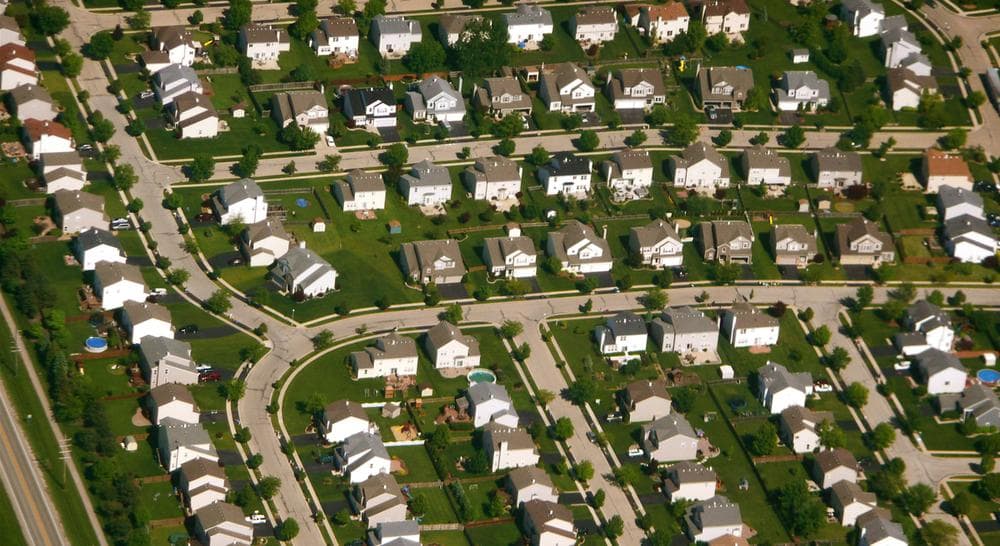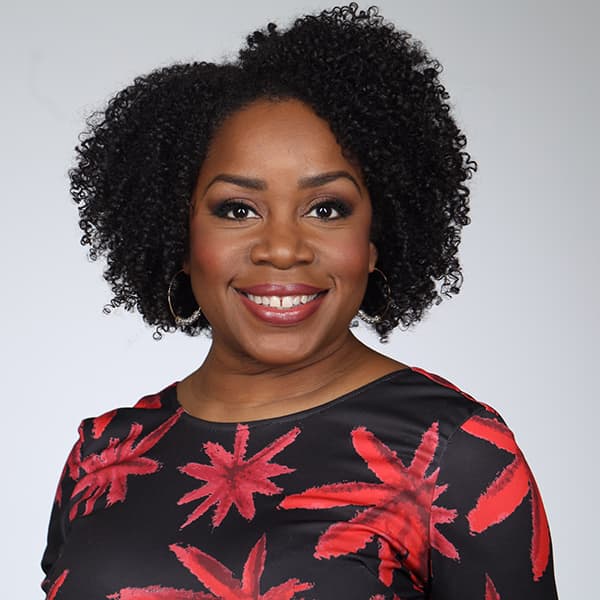Advertisement
The growing diversity in America's suburbs
Resume
The “suburbs” have become a hot constituency in recent years. But has the term enveloped the full range of their residents?
“In the last two decades in particular, the number of people of color, immigrant folks, low income folks have increased in suburban spaces," R. L’Heureux Lewis-McCoy, a professor of sociology at NYU, says.
"So now the conversation of ‘Do you appeal to the suburban voters?’ is even more important because … in reality it actually means a very diverse sector.”
Today, On Point: The growing diversity in America’s suburbs.
Guests
R. L’Heureux Lewis-McCoy, associate professor in the sociology of education program at New York University. (@DumiLM)
Also Featured
Suja Amir, mom in Henrico County, VA.
Revida Rahman, mom in Brentwood, TN.
Julie Collins, organizer with Red, Wine & Blue, a national network of multiracial suburban women mobilizing to counter disruptive groups in schools.
Interview Highlights
On when the suburbs became a key constituency in politics
R. L’Heureux Lewis-McCoy: “The suburbs, for better or for worse, in many people's imaginations right now, are pretty hot. And we saw with the last election cycle, whether it was the gubernatorial election in Virginia or the presidential election, that people are calling out to the suburbs and saying, We need to court suburban voters. And that appeal to suburban voters has an earlier route, probably closer to the 1970s and '80s. When we think about what happened with major metropolitan cities in the 1960s and 1970s, you had the concentration of poverty within cities.
"Those who had the economic means tended to move outside of the city into suburban areas, and there was also the movement of jobs away from the cities, to the suburbs or to other countries. And what happened was the idea of the American dream really crystallized along the suburban frontier. So in that way, by the time you get to the 1960s and '70s, you have politicians explicitly saying, I know I have to capture the vote inside of Boston, as well as the vote outside of Boston.
"And the appeal to the suburban voters coming out of the 1970s and '80s, even through the 1990s, was often an appeal targeted directly at where they thought middle income and above white residents were. So there's a longer history of an appeal to a suburban voter. But more recently, this appeal to the suburban voter gets complicated, in part based on who's there now and what an individual politician may be signaling when they say they want to get the suburban voter.”
On assumptions about the suburbs, and what the suburbs are actually like
R. L’Heureux Lewis-McCoy: "I think the the canonical example of the suburb is the one that was developed after World War II. They took a plot of farmland, and they build out a set of often cookie-cutter houses. And there, they would define how big the house was. They would make sure it had similar plumbing. They made sure they had common streets and sidewalks. But those covenants were also pretty significant. ... You would have areas where Black people could build homes, could do the plumbing, could pick up the trash, but they were restricted from living in. And so what happened was in those predominantly white suburbs, that were central to the suburbanization of America, there were also suburban spaces that were developed that had large concentrations of color.
"So we now know that there were a number of Black suburbs and Black settlements that existed alongside or separate from the white suburbs that develop. Now, in particular, those Black suburbs usually were not as affluent or not as well resourced. But there has actually been a history of Black people, and nonwhite folks and Asian folks in the suburbs. What happens, though, over time, is that when there are people with more economic means started to move out into the suburbs, the challenges of the city emerge. But intergenerational challenges often emerge.
"So maybe you were the child of a college-educated family that found refuge in a nice suburb outside of the city. And while your parents love the suburbs, when you completed college, the last place you wanted to be were the suburbs. You said, Well, the suburbs are boring, the suburbs are tired. I don't want to drive everywhere. And so you had a migration from the suburbs back into central cities.
"And what we've seen, particularly in the last two to three decades, is as middle class and above residents, particularly white, middle class and above residents return to cities, many of those cities that have been places where Black folks have been, Asian folks have been, Latinx folks have been, they have found the ability to secure housing in the city is compromised. So the prices of a downtown rent in 1985 look very different than in 2005.
"And so then those lower income folks have to say, Well, where can I afford to live? And oftentimes they started to migrate back out into the suburbs. So that would mean sometimes they would go right across this city line into an inner ring suburb. And with that migratory pattern, what you started to find, is that more people were pushed into the suburbs. But this time not so much by choice, but this time by circumstance. Which has led now to us now having more poor residents in the suburbs than we do in central cities, having more Black residents in the suburbs than we do central cities, and on down the line."
There's more racial, ethnic and economic diversity in the suburbs. Why don't we see that reflected in the way politicians and members of the media talk about the suburbs?
R. L’Heureux Lewis-McCoy: "I think we have a really strong imagination of what the suburbs are. So as you mentioned before, when you say suburban, you think of something like 'Leave it to Beaver' or the 'The Dick Van Dyke Show' or even more contemporary examples, maybe even something that looks like 'Black-ish.' And everyone who's in the suburbs seems to have enough money. They've created their own little cottage curated space. But the issue with that is often it misses out on the folks who are poor.
"One of the dimensions of the suburbs that we have to think about also is how private things are. It's the idea you have your own space, your own domicile. So when it comes to a question of, Well are people experiencing poverty? Oftentimes, that's not polite conversation. We can see in the suburbs, over the past two decades, an immense increase in foreclosures. But folks don't talk about, What does it mean to have a house where you've missed mortgage payments? What does it mean to own a home where you're now underwater on the mortgage?
"This is a suburban experience, but that's not the kind of conversation we often like to have. The other thing that often happens is in suburban communities, we think about single family homes. As more folks have moved into the suburbs, the question of where can you rent? Where can you find affordable rent and how do apartments and homes mix? So these are the questions of actually addressing the new suburban reality that we face."
On coalition politics, and how parents can make sure everyone is represented in schools
R. L’Heureux Lewis-McCoy: "Coalition politics are not about demonization. You may have someone who is reading from a script, who thinks they are doing the best for their child. And they don't realize the collateral consequences. Particularly in suburban spaces, coalition politics work well when you start with listening. So you may have a town that has a majority white population. But also has a significant presence of Latino folks and Asian American folks.
"And when you look at a thing like a school board, you have to look at its composition. And oftentimes we find that while our schools are very diverse in suburban spaces, our school boards are not. Meaning the people who make decisions around the budgets of schools. people who make decisions, even the degree to which curriculums can change, don't reflect the diversity. So when we're building coalition politics in the suburbs, I always say, well, look at the school board and figure out who isn't present and who's voice needs to be represented.
"You want to look at who shows up in the room, whether it's at the PTA or whether it's at the school board and say, Well, why don't we hear from certain communities? Because while I may be an African American male, and I may be raising children in the suburbs, I may understand my children's experience with discipline and discrimination, but I may not understand my neighbors' experience who may be undocumented and Hmong. I have to listen and learn from their experience to figure out how to advocate for them.
"Because when the time comes to speak up at the mic, when the time comes to actually challenge the idea that the curriculum is not inclusive, that the books that are that are being taught are not helpful. I have to be able to not only elevate my voice, but the chorus around me. And coalition politics in the suburbs work well when people start from a listening position and then they advocate not just for themselves, but for the collective. And you can still advocate for the specifics that your community needs, but you should never do so to the exclusion of the ones that are around you."
On how the media and politicians can better represent all voices in the suburbs
R. L’Heureux Lewis-McCoy: "In an ideal situation, you have a thriving local media, whether that is a newspaper, whether that is a set of conversations that happen in public around what's changing. But the consolidation of media has often meant that local papers aren't profitable, and things that are local don't produce the returns that allow people to continue. What I've seen in communities that actually helps are having active sites that use platforms like Patch. I've seen community groups using forums like Medium, and Facebook and other social media to create an internal dialog about local politics that has been created by the vacuum of the consolidation of media.
"I think it also means when those national organizations come to town that they have a responsibility to do some legwork of finding a chorus of voices, not just voices that fit the narrative that they imagine out the gate. The truth of the matter is that if you can build trust in local communities and I know this as a researcher, as someone who goes around nationally and studies suburbs, the more you build trust in the community by demonstrating you're a person who has the best of intentions, the more you can actually get people to talk to you.
"And one of the things that we have seen some national media raising concern about is the idea that when they go to these suburban spaces, they can't actually get in contact with people, people are unwilling to speak. Well, the more you broker a trusting relationship, the more you listen, the more you're tied to organizations that keep the community at the central at the center, the better we understand what's happening.
"It is my hope that the national media starts to cover the commitment to diversity and equity, in a way that reflects what's happening on the ground. Because 2020, in the summer of 2020, you had thousands of suburban marches for George Floyd that when we look at the media coverage and comparison to suburban book bans, book bans get way more attention. So we have to always check what we frame, and how we think about things. So that we can actually capture what matters to the people on the ground, so that the voices that you captured in this segment, that they actually feel reflected when you talk about suburban voters and suburban communities."
This program aired on February 22, 2022.

